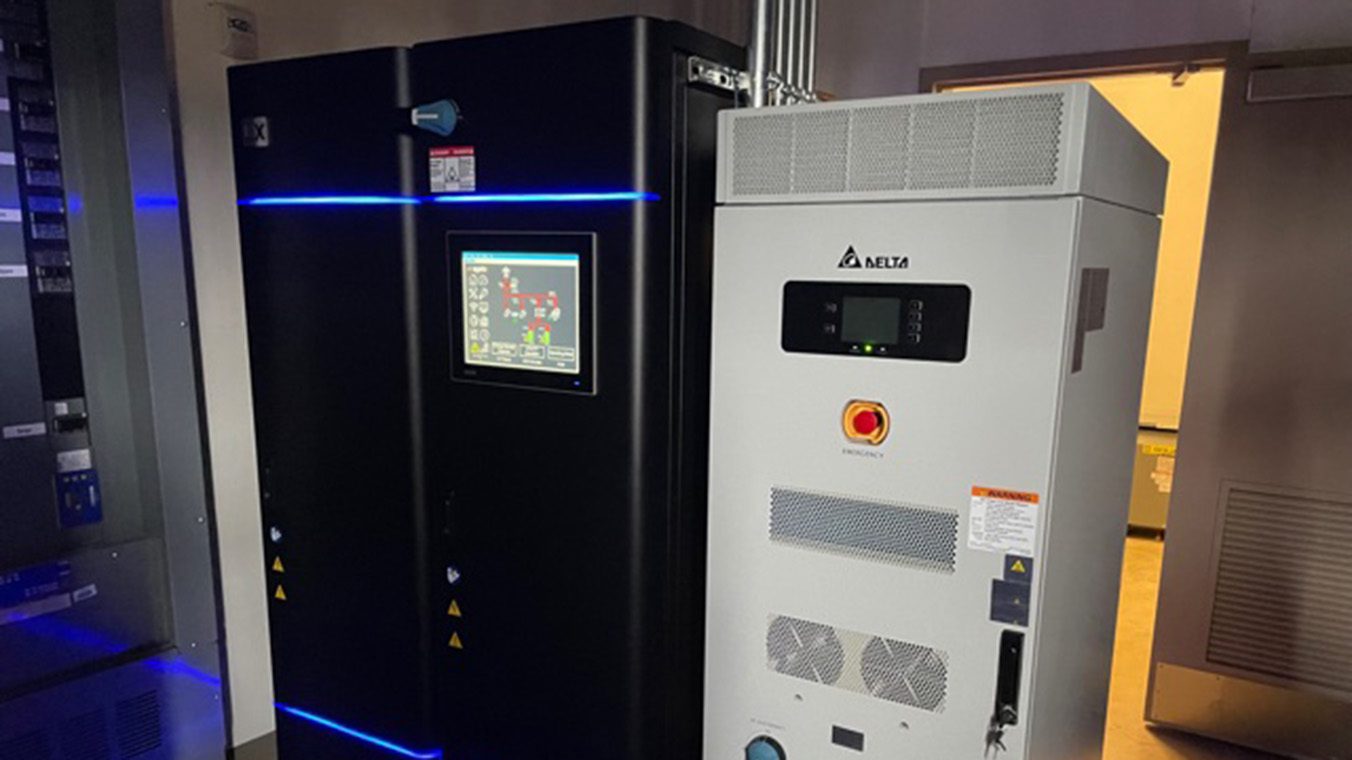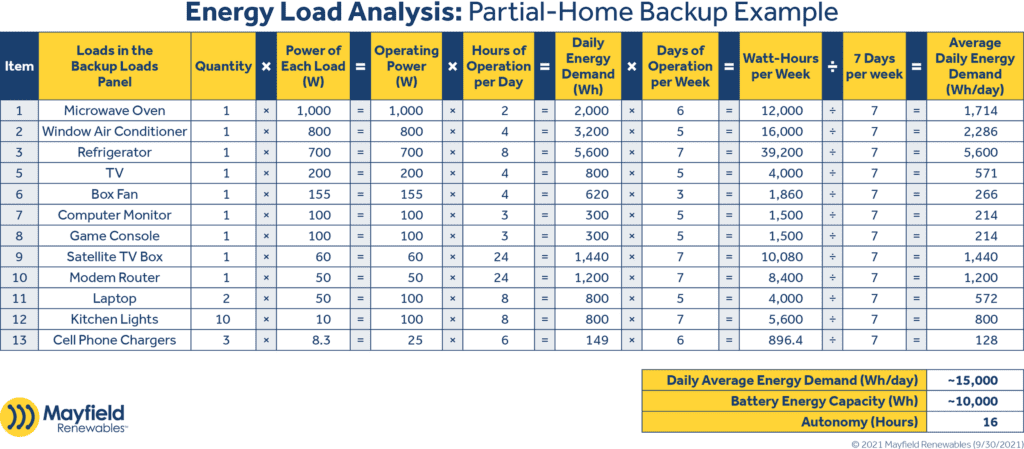
Technical Article
Energy Storage Terms and Definitions
As climate change’s harshest realities continue to unfold, our team has seen an expanded interest in facility electrification and decarbonization. These efforts have proven to be powerful tools for slowing and preventing the effects of climate change. And whether you are a solar installer, manufacturer or policymaker, energy storage systems (ESS) are quickly becoming the center of attention within and around the energy industry.
Fundamental to every highly technical field is a standard set of terms that manufacturers, designers and end users can employ to help understand and compare these systems. Building off our energy storage 101, ac vs. dc coupling and lead-acid vs. lithium-ion posts, here, I will overview the most common terms and definitions within the growing ESS industry. These terms will help us expand on this topic through future ESS blog posts related to technology comparisons, modes of operation, proper equipment sizing and code compliance.
ESS Terminology:
Energy Storage System (ESS)
As defined by 2020 NEC 706.2, an ESS is “one or more components assembled together capable of storing energy and providing electrical energy into the premises wiring system or an electric power production and distribution network.” These systems can be mechanical or chemical in nature. In this post, we are most interested in the chemical variety used to store electrical energy (for example, lead-acid and lithium-ion batteries).
Power
Power describes the rate that an electrical device either produces or consumes energy per unit of time. For an ESS, power is typically measured in watts (W), kilowatts (kW) or megawatts (MW), depending on the scale of power associated with the system. One kilowatt is equivalent to 1,000 watts; one megawatt is equal to 1,000,000 watts.
Energy
Energy describes the amount of power produced or consumed over a period of time, measured in watt-hours (Wh), kilowatt-hours (kWh) or megawatt-hours (MWh).
Lithium-ion battery manufacturers provide system energy storage ratings in units of kWh, while lead-acid manufacturers rate their products in terms of amp-hours (Ah). This is because lithium-ion batteries are typically assembled as a UL Listed system while lead-acid batteries are not. To convert from amp-hours to watt-hours, multiply the Ah rating by the nominal system voltage (Ah x V = Wh). Either way, these ratings (Wh or kWh) tell us the battery capacity, or how much energy the battery can store. If we think of a battery as an energy bucket, the capacity rating tells us how big that bucket is.
Loads
Electrical devices or equipment requiring electrical power to operate are called loads. Electrical loads can be resistive (such as a lightbulb or an outlet); inductive (such as a motor); or less commonly, capacitive (such as a synchronous motor or a capacitor bank).
Load Analysis
A proper load analysis uses electrical usage data from the utility to build a table of all the electrical loads that will be backed up and for how long. This data will be used to calculate the battery capacity required to meet onsite power and energy demands.
The analysis can be done with a simple spreadsheet-based calculation, on-site measurement of the loads in question, or by using sophisticated software such as NREL’s HOMER Pro. For a more in-depth example of a load analysis, check out our recent article on sizing an Enphase Encharge system.

Load Shedding
Load shedding describes the reduction in net electrical demand by removing loads connected to an ESS. This is a valuable technique for ensuring that power to essential loads is not lost when onsite stored energy is in limited supply and energy production cannot account for the shortage.
For example, imagine a facility with only two loads: a freezer holding life-saving medicine that must be stored at low temperatures and a series of hallway lights. In the event of an outage when the ESS is not fully charged, we could “load shed” by effectively turning off power to the hallway lights to ensure the freezers stay operational.
Surge
Some electrical and virtually all inductive loads will not reach their steady-state operation instantaneously. In other words, more power is required to “start” the load than to operate the load. This is described as the surge power.
Surge is also referred to as a load’s “inrush” or “startup” current and is typically rated as Locked-Rotor-Amps (LRA). Inductive loads, such as motors and compressors, will have an LRA rating associated with their electrical operation, whereas resistive loads, such as a lightbulb or electric heater, will not.
Capacity
The amount of energy a battery or ESS can store is described as its capacity and is expressed in units of kilowatt-hours (or amp-hours for lead-acid batteries).
Charge
Charging is the act of adding energy to a battery or storage system. Matching the charging source, such as a solar PV system, to the storage system is fundamental to the load analysis exercise as chronic overcharging or undercharging are detrimental to an ESS’s longevity, especially for lead-acid batteries.
Discharge
Discharging is the act of removing energy from a battery or storage system. Again, a load analysis will inform the designer and the user of which loads an ESS can sustain and for how long. Chronic over-discharging can be nearly as insidious to a battery’s health as overcharging, most notably in the case of lead-acid.
State of Charge (SOC)
The SOC refers to the amount of charge currently remaining within an ESS and is usually displayed as a percentage from 0-100%. Lithium-ion batteries are often rated to discharge to 0-5% SOC, while it is generally prudent to discharge a lead-acid system to only 50% SOC.
Depth of Discharge (DOD)
The inverse of SOC is DOD. In other words, it describes the amount of charge that has been removed from the ESS. For example, a 10 kWh ESS that is designed for a daily DOD of 80% means that 80% of the capacity (or 8 kWh) is discharged each day. DOD is controllable and often comes into play when configuring a system to limit its discharge. Load shedding and auto-starting a generator are techniques for limiting a system’s DOD without causing a power failure.
State of Health (SOH)
SOH is a comparison of how much capacity remains in a battery compared to its capacity when purchased.
For example, if a battery was able to hold 100 Ah off-the-shelf and now it can only hold 95 Ah, then its SOH is roughly 95%.
SOH is difficult to calculate precisely and depends on algorithms that battery manufacturers generally keep under wraps. It will vary depending on the site temperature (higher temperatures will degrade battery faster) and charge rate (faster charging will degrade the battery faster), among numerous other factors.
Cycle
A complete cycle occurs when a battery is discharged to its maximum depth of discharge rating and is recharged to a 100% state of charge. Most ESS on the market today are warrantied for a certain number of cycles.
Essential Loads Panel
A common misconception about energy storage is that a single battery or ESS can back up an entire facility. In reality, the solar PV and ESS must be sized appropriately to meet on-site electrical loads. Backing up an entire facility’s loads can be challenging and requires a sizable amount of solar PV and a sufficiently large ESS. What’s more common is partial backup, where a smaller, pre-selected number of loads are chosen for backup.
Generally, these partial-backup systems are set up only to provide power to the essential loads so the most important operations or equipment can stay operational in the event of a grid outage. The essential loads panel is the electrical panel that contains these loads and is sometimes referred to as the “protected loads panel” or “backup loads panel.”
Essential loads panels may also be incorrectly referred to as “critical loads panels”, which may get confused with those utilized in “Critical Operations Power Systems” and get mistakenly subjected to more stringent electrical code requirements. This is a common misconception, and the distinction between the two types of panels is important to know.
Multi-Mode Inverter
As discussed in previous blog posts, a multi-mode inverter can operate as either a utility-interactive or standalone inverter. During a power outage, a multi-mode inverter—using power from the ESS—will mimic signals from the grid, allowing the rest of the system, including the solar array, to stay online.
In addition, multi-mode inverters can operate in Self-Consumption, Time of Use and Peak Demand Shaving modes. The latter two modes enable the solar array and ESS to work together to optimize when and how much electricity is supplied from the utility versus the generation and storage system on-site. In doing so, the facility owner can leverage their on-site energy from the solar-plus-storage system when utility rates are high and purchase electricity from the utility when rates are low.
Modes of Operation:
-
Backup. Backup mode allows the ESS to operate in standalone mode when grid power is lost. This is commonly deployed when backing up essential loads that would cause undue distress to a facility’s operation or the building’s occupants.
-
Self-Consumption (Self-Supply). Some utilities do not allow solar to backfeed onto their grid, which means all energy produced on-site must be used or stored later. ESS are often used in this capacity in Hawaii, where balancing the grid is more tenuous.
-
Time of Use (TOU). Where utilities charge more for using electricity during peak times, an ESS can help shift the use of solar energy to better match the consumption curve when these peak times fall outside of the solar production window.
-
Peak Demand Shaving. Most commercial and industrial properties within the U.S. operate on a demand rate schedule where the cost of energy is usually low, but the price of on-demand power is high. For example, some industrial equipment may draw large amounts of power for a short duration—this would be considered on-demand power. In these situations, an ESS can actively reduce demand by deploying power during times of high facility demand, effectively eliminating the high cost of demand charges.
AC and DC Coupling
A topic of particular use in the ESS discussion. Instead of rehashing what we previously covered on this topic, please check out our recent post titled AC vs. DC Coupling.
It goes without saying that there are many more terms pertinent to the field of energy storage. This collection, however, will give us a basis upon which to expand in upcoming posts.
Author Nick Kirk is a PV designer at Mayfield Renewables and a NABCEP-certified PV Installation Professional and PV System Inspector. To start a solar-plus-storage design project or inquire about project consulting, simply fill out this quick form.


